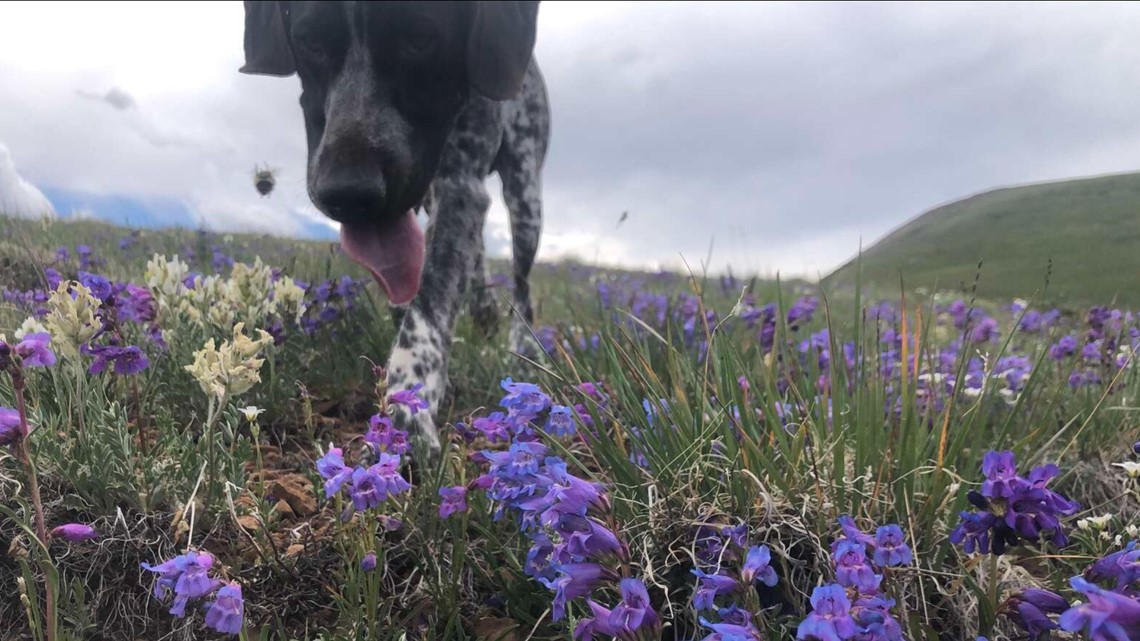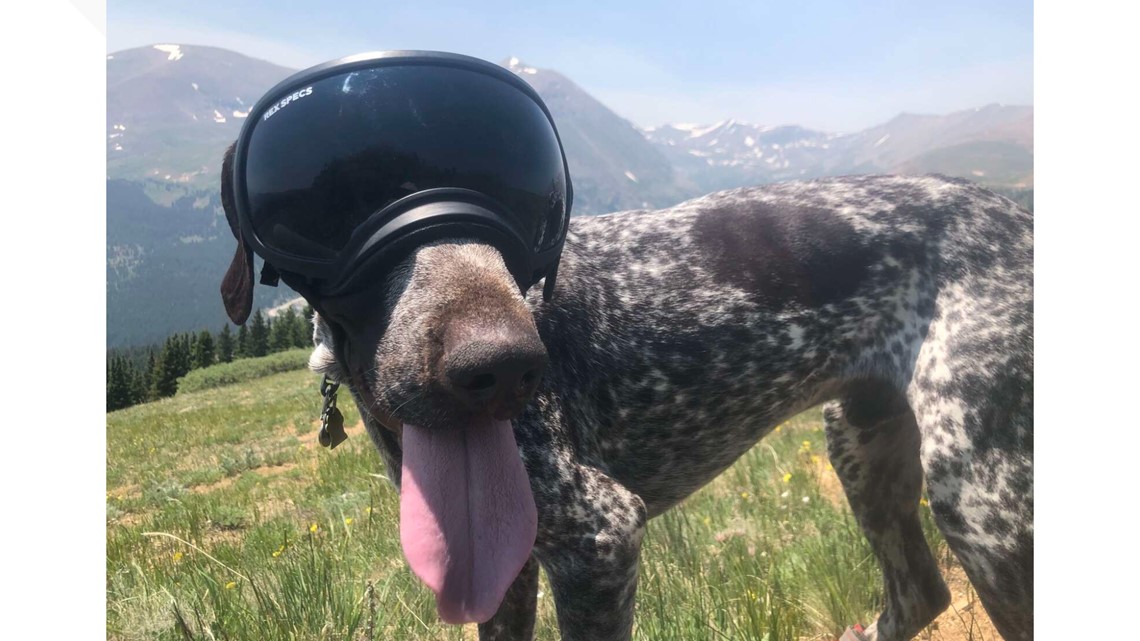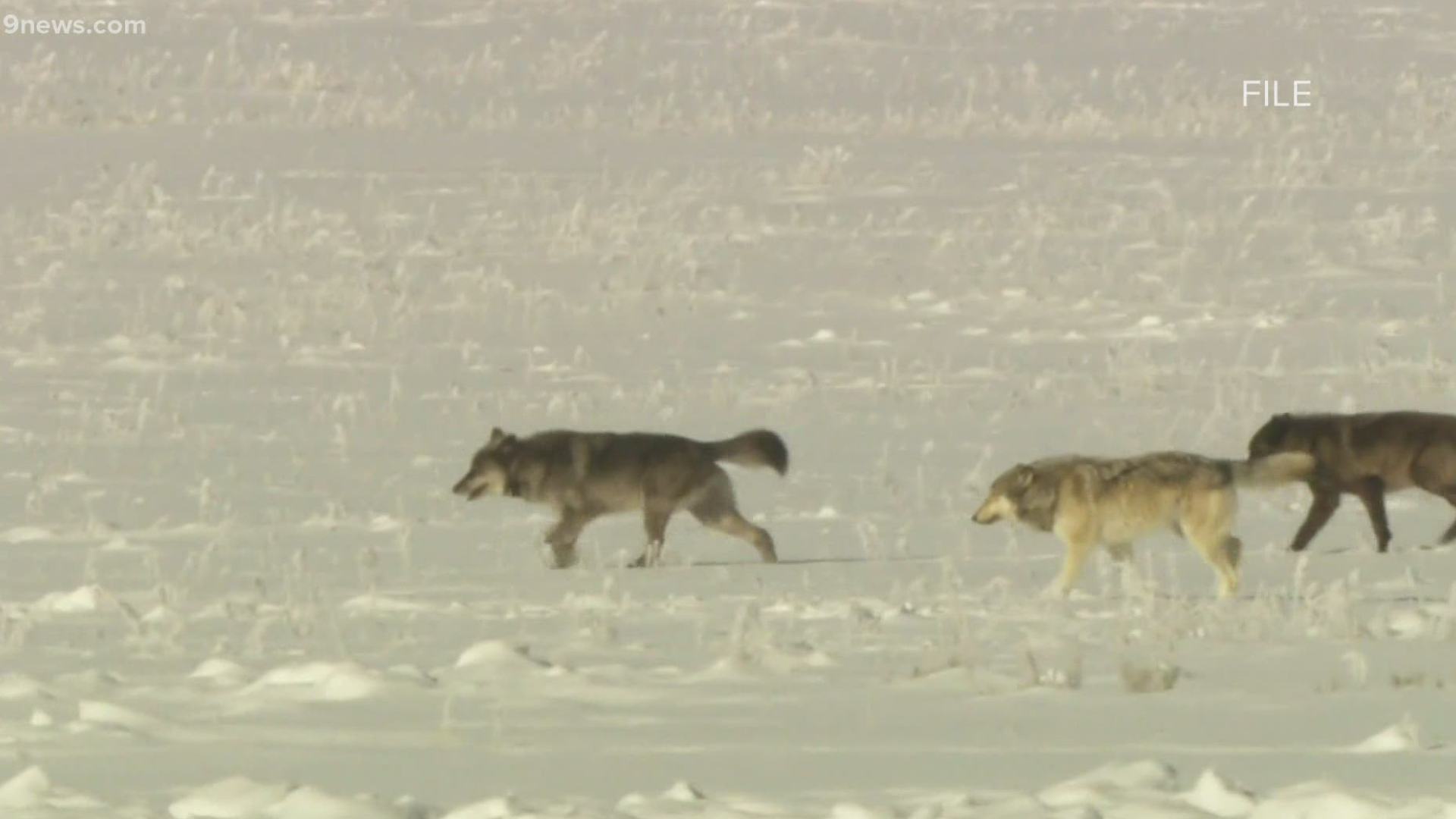FRISCO, Colo. — Jacqueline Staab found a way to combine her two passions in her conservation research efforts: bees and dogs.
Staab’s dog Darwin was trained as a conservation detection dog to seek out bumblebees and their nests, and Staab said he’s the only conservation dog in the country that specializes in bees. The research Staab and Darwin do together is for her master’s in evolutionary ecology.
>Video above: Six gray wolf pups spotted in Colorado.
For the past four or five years, Staab has been coming to Summit County on her own to research bees, and this year is the first she’s had Darwin along for the ride. The duo specializes in alpine bumblebees, making Summit County an attractive research destination.
“I couldn’t imagine a better place to do research with Darwin,” Staab said. “Alpine bumblebees are also like a canary in the coal mine for climate change. … By seeing how they’re reacting out here, it can help us predict future movements and shifts.”
> This story is powered by COLab, the Colorado News Collaborative. 9NEWS joined this historic collaboration with more than 40 other newsrooms across Colorado to better serve the public.
While her research season is just kicking off, Staab and Darwin have already done surveys around Hoosier Pass and throughout parts of the White River National Forest.
“We’re not seeing very many bumblebees, so we definitely have our work cut out for us,” Staab said. “This is honestly the lowest number of bumblebees I’ve seen out here.”
Bumblebees are opportunistic nesters, meaning they will nest anywhere they can. Staab said they like to use abandoned animal burrows, sheds, wood piles or large grass clumps.
Staab said until recently, most bumblebee conservation research has only been focused on their need for floral resources. She said there are two other key aspects of research: their need for an overwintering site and a nesting site.
“In order to conserve the species, we need to know all parts of the puzzle,” Staab said. “Bumblebees are really important; they’re keystone pollinators. … If we start to lose pollinator diversity we’re going to lose plant diversity as well, and that’s just going to start a cascade of ecological problems.”
Working with Darwin, Staab said their research adds novel information about bumblebee nesting habits and preferences, which can help conservation organizations determine how best to allocate funding to help them.
“The more we can find out about the full picture of their nesting preferences, their nesting ecology — we really know nothing — the better we can see the whole picture so we can find a solution,” Staab said.
Staab said there is a certain set of traits that detection dogs need. Darwin, a German shorthaired pointer, came from a lineage of working dogs, and pointers naturally hold their heads close to ground and have a high drive.
Staab got Darwin when he was a puppy and sent him to Highland Canine Training in North Carolina when he was 6 months old. Trainers at Highland Canine had worked with other conservation dogs before but not specifically for bees.


Amber Siebsen, who led Darwin’s training, said he was a natural. Darwin was the first conservation dog Siebsen trained; she typically trains other detection dogs for law enforcement and search and rescue.
Siebsen said Darwin’s training process is very similar to how she trains other dogs; the main difference was the environment where she trained him. Darwin was also trained to stay a few feet away when detecting bees, for his own safety and the bees,’ while narcotics dogs are trained to get as close as possible to the source of the scent.
The first step in training is imprinting, which is essentially teaching the dog which odor to sniff for. This is done by placing the scent in a pipe with holes drilled in it. In Darwin’s case, the smell came from bee nests.
Siebsen said once the pipe is filled with the odor, trainers play fetch with the dog for about 75 minutes to expose it to the smell. Siebsen said the 75-minute period came from a study the training center’s president did on how long it takes for a dog to learn a new smell.
The next step in the training process is behavior shaping, which is teaching the dog what to do when it finds an odor. Siebsen said this was easier for Darwin because, as their name suggests, pointers naturally point.
When a dog does what she wants it to do — like point to the source of an odor — Siebsen will reinforce the behavior with a ball. Then she’ll add in multiple boxes with different scents to start teaching the dog how to hunt, using the ball whenever Darwin pointed to a box with the correct scent.
Siebsen said dogs like Darwin are much more capable of finding things in nature than humans are. Staab added that one-third of a dog’s brain is controlled by its olfactory system.
“We’re taking a natural skill … and we’ll just kind of teach them to use it to our advantage, giving them a game that satisfies their needs and accomplishes what we need,” Siebsen said. “With Darwin, you’re able to clear a large chunk of forest or field very quickly, much faster than you would be able to just walking around and looking.”
Other types of conservation detection dogs will seek out bats, whales, jaguars, weeds and various types of invasive species. Staab said she thinks Darwin specializing solely in bumblebees is an advantage because their scent is so faint.
Siebsen added that when training detection dogs, she always gives them the opportunity to make a mistake. She had the scents of different kinds of bees at the facility when training Darwin, and he never made a mistake.
“There’s something about bumblebees that he can smell that’s significantly different to other bees,” Siebsen said. “If you change the species of bumblebee or the type of bumblebee on him, he’ll still indicate.”
Staab said she is always looking for help in her bumblebee research and encouraged anyone who has seen a bumblebee nest to contact her at darwinthebeedog@gmail.com or on Darwin’s Facebook page.


> Top stories from 9NEWS curated daily just for you! Sign up for the 9NEWSLETTER right now to get can’t-miss stories, Next and Broncos content, weather and more delivered right to your inbox.
SUGGESTED VIDEOS: Animals and Wildlife
MORE WAYS TO GET 9NEWS
Subscribe to our daily 9NEWSLETTER for top stories from 9NEWS curated daily just for you. Get content and information right now for can’t-miss stories, Next and Broncos content, weather and more delivered right to your inbox.
DOWNLOAD THE 9NEWS APP
iTunes: http://on9news.tv/itunes
Google Play: http://on9news.tv/1lWnC5n
HOW TO ADD THE 9NEWS APP TO YOUR STREAMING DEVICE
ROKU: add the channel from the ROKU store or by searching for KUSA.
For both Apple TV and Fire TV, search for "9news" to find the free app to add to your account. Another option for Fire TV is to have the app delivered directly to your Fire TV through Amazon.

